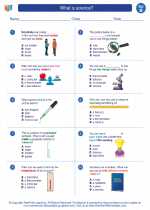Acceleration
Acceleration is the rate of change of an object's velocity over time. It can be a change in speed, direction, or both. When an object speeds up, slows down, or changes direction, it is experiencing acceleration.
Types of Acceleration
There are two main types of acceleration:
- Linear acceleration: This occurs when an object speeds up or slows down in a straight line.
- Angular acceleration: This occurs when an object changes its direction of motion, such as when a car goes around a curve.
Acceleration Formula
The formula for acceleration is:
Acceleration (a) = Change in velocity (Δv) / Time taken (Δt)
Units of Acceleration
The standard unit of acceleration in the metric system is meters per second squared (m/s2). In the English system, it is feet per second squared (ft/s2).
Calculating Acceleration
To calculate acceleration, you can use the following formula:
Acceleration (a) = (Final velocity - Initial velocity) / Time
Acceleration and Velocity-Time Graphs
On a velocity-time graph, the acceleration of an object is represented by the slope of the line. A steeper slope indicates a greater acceleration, while a shallower slope indicates a lower acceleration.
Study Guide
Here are some key points to remember about acceleration:
- Acceleration is the rate of change of an object's velocity over time.
- It can be a change in speed, direction, or both.
- The formula for acceleration is: Acceleration (a) = Change in velocity (Δv) / Time taken (Δt)
- The standard unit of acceleration in the metric system is meters per second squared (m/s2).
- On a velocity-time graph, the acceleration is represented by the slope of the line.
◂Science Worksheets and Study Guides Second Grade. What is science?

 Worksheet/Answer key
Worksheet/Answer key
 Worksheet/Answer key
Worksheet/Answer key
 Worksheet/Answer key
Worksheet/Answer key
 Vocabulary/Answer key
Vocabulary/Answer key
